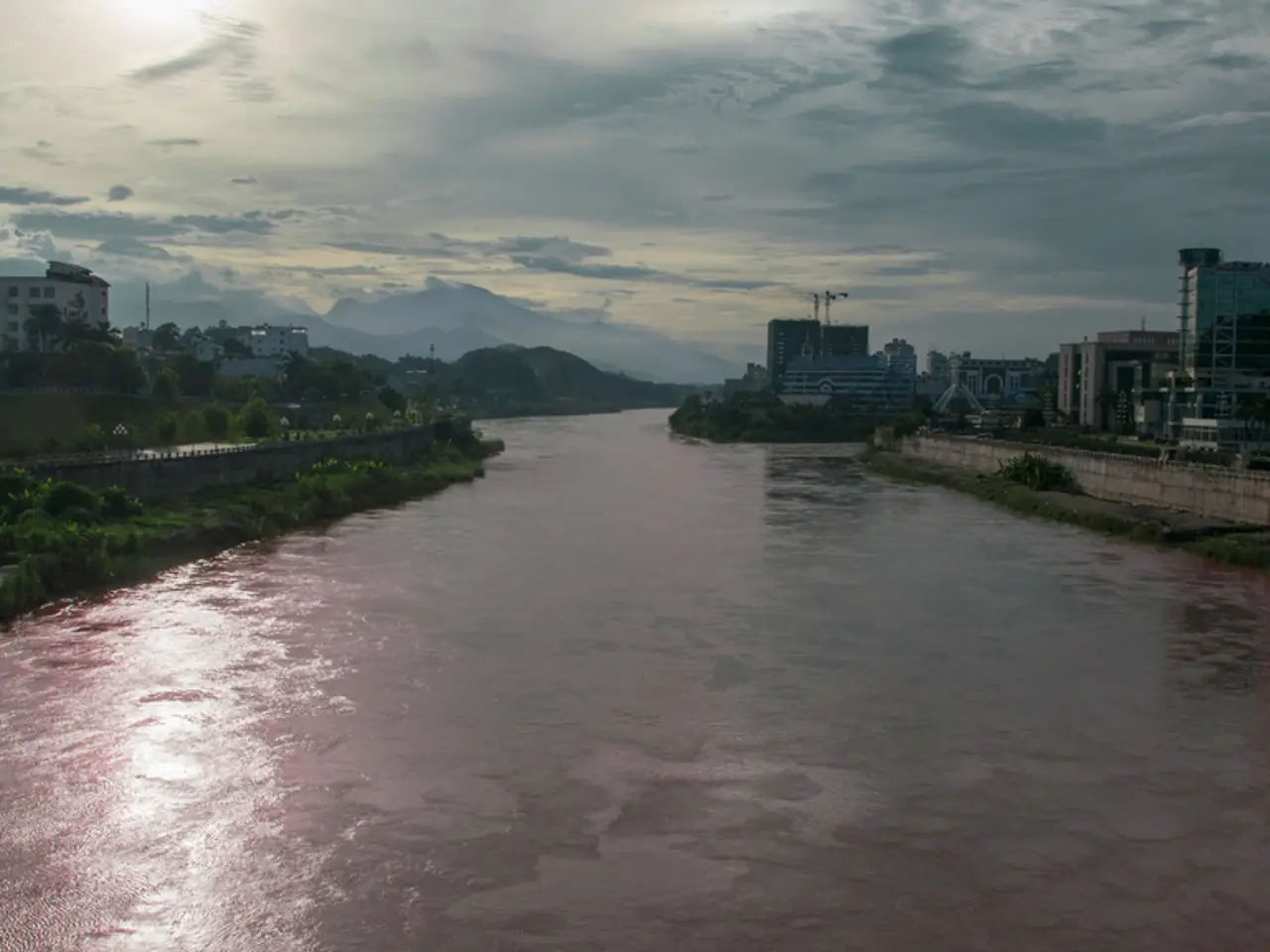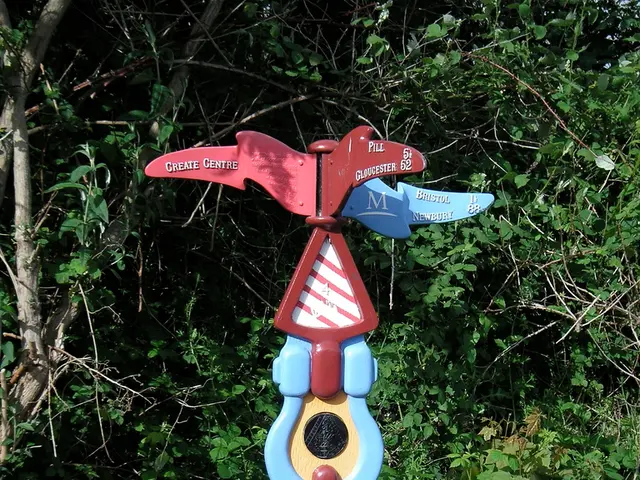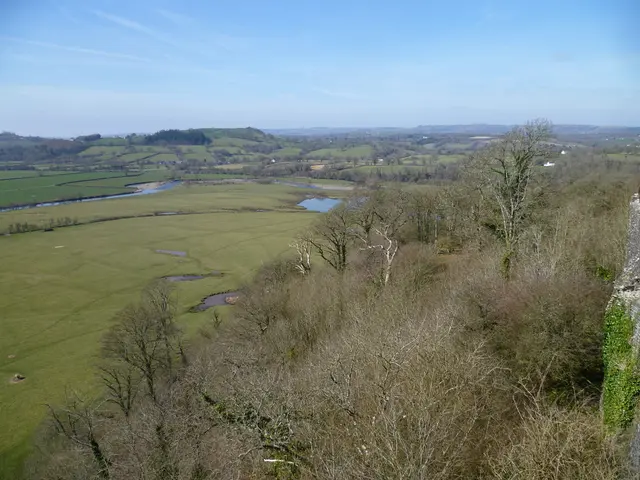Enhancing inland water quality through natural infrastructure could yield financial advantages of up to R257 million.
Cape Town's Green Infrastructure Investments Estimated to Generate Up to R257 Million in Economic and Social Benefits
According to a report from the NBI Global Resource Centre, the projected net benefits of Cape Town's planned green infrastructure investments in the Diep/Sand- and Zeekoe catchments over a 25-year period are estimated to be up to R257 million.
The assessment found that there is a strong economic case for NBI (Nature-Based Infrastructure) interventions in both catchments, including reductions in flood damage costs, improved public health outcomes, enhanced biodiversity, and avoided costs of sediment and invasive plant management.
Key aspects of these benefits include:
- Economic returns: For every R1 invested in nature-based interventions in the Diep/Sand catchment, the societal return is approximately R2, indicating a benefit-cost ratio of about 2.0.
- Sources of benefits: The largest gains come from preserving tourism and property values, reducing flood damage, and saving costs related to dredging and repairs of waterways.
- Cost avoidance: The interventions are projected to avoid up to R55 million in dredging and canal refurbishment expenses by restoring natural hydrology and reducing sedimentation, which serves as a more cost-effective alternative to grey infrastructure upgrades.
- Employment and community impact: Beyond economic benefits, the projects are expected to create over 60 local jobs annually, supporting biodiversity, enhancing ecosystem health, and contributing to sustainable urban development goals.
- Climate resilience: The green infrastructure investments address challenges from climate change and urbanization by reducing flood risks and improving water quality, which is vital for long-term ecosystem health and city resilience.
These findings underscore the strong case for continuing and scaling up nature-based infrastructure projects in these catchments to generate substantial net benefits and sustainable development outcomes over the next 25 years.
The finance that can be leveraged for these projects, the boost to the green economy in terms of skills and supply chain development, including enhanced goods and services, is of paramount importance. The CFF, funded by the German Federal Ministry for Economic Cooperation and Development (BMZ), the UK Foreign, Commonwealth and Development Office (FCDO), and implemented by Deutsche Gesellschaft für Internationale Zusammenarbeit (GIZ) GmbH together with the C40 Cities Climate Leadership Group, provided support for Cape Town's nature-based infrastructure interventions.
Cape Town, home to nearly 2000 km of rivers, 480 km of canals, over 800 stormwater ponds, and thousands of hectares of biodiversity-sustaining wetlands and vleis, is also a Ramsar City, an international accreditation recognizing exceptional commitment to conserving wetlands and ecosystem services.
The City developed a Water Strategy to ensure safe and reliable water access for all residents, including becoming a water-sensitive city by 2040. The City's planned Paardevlei solar plant will be a 70 MW municipal own-build plant, with potential for 2000 direct and indirect employment opportunities during construction and 100 long-term opportunities over the plant's operation.
The LUW Programme aims to use water-sensitive design, waterway rehabilitation, and investments in nature-based solutions or green infrastructure to provide multiple social, environmental, and economic benefits. These nature-based and hybrid infrastructure plans include wetland rehabilitation, invasive plant species removal, canal naturalisation, the installation of waste interceptors and sediment treatment areas, among others.
References: [1] NBI Global Resource Centre, (2025). [Report Title]. [2] City of Cape Town, (2020). Water Strategy. [3] C40 Cities Finance Facility, (n.d.). About Us. [4] NBI Global Resource Centre, (2025). [Report Appendix].
- The economic benefits of Cape Town's green infrastructure investments in Diep/Sand- and Zeekoe catchments are projected to be up to R257 million over 25 years, with every R1 invested returning approximately R2.
- The largest gains in benefits from these investments come from preserving tourism and property values, reducing flood damage, and saving costs related to dredging and repairs of waterways.
- These nature-based infrastructure projects are also expected to create over 60 local jobs annually, contributing to sustainable urban development goals.
- Besides the economic benefits, these green infrastructure investments address challenges from climate change and urbanization by reducing flood risks and improving water quality.
- The finance for these projects can be leveraged from sources like the CFF, funded by BMZ, FCDO, and implemented by GIZ GmbH together with the C40 Cities Climate Leadership Group.
- Cape Town, a Ramsar City, plans to become a water-sensitive city by 2040 with the development of a Water Strategy.
- The City's planned Paardevlei solar plant, a 70 MW municipal own-build plant, may provide up to 2000 direct and indirect employment opportunities during construction and 100 long-term opportunities over its operation.
- The LUW Programme aims to provide multiple social, environmental, and economic benefits by using water-sensitive design, waterway rehabilitation, and investments in nature-based solutions or green infrastructure.
- Sustainable living can be promoted through interventions such as wetland rehabilitation, invasive plant species removal, canal naturalisation, the installation of waste interceptors and sediment treatment areas, and more.
- Data and cloud computing can aid in managing and planning such green infrastructure projects effectively, considering their long-term social, environmental, and economic benefits.
- Pursuing a lifelong learning approach and investing in education and self-development in areas like environmental science, technology, and finance will help create an informed society that can drive sustainable development and growth.




